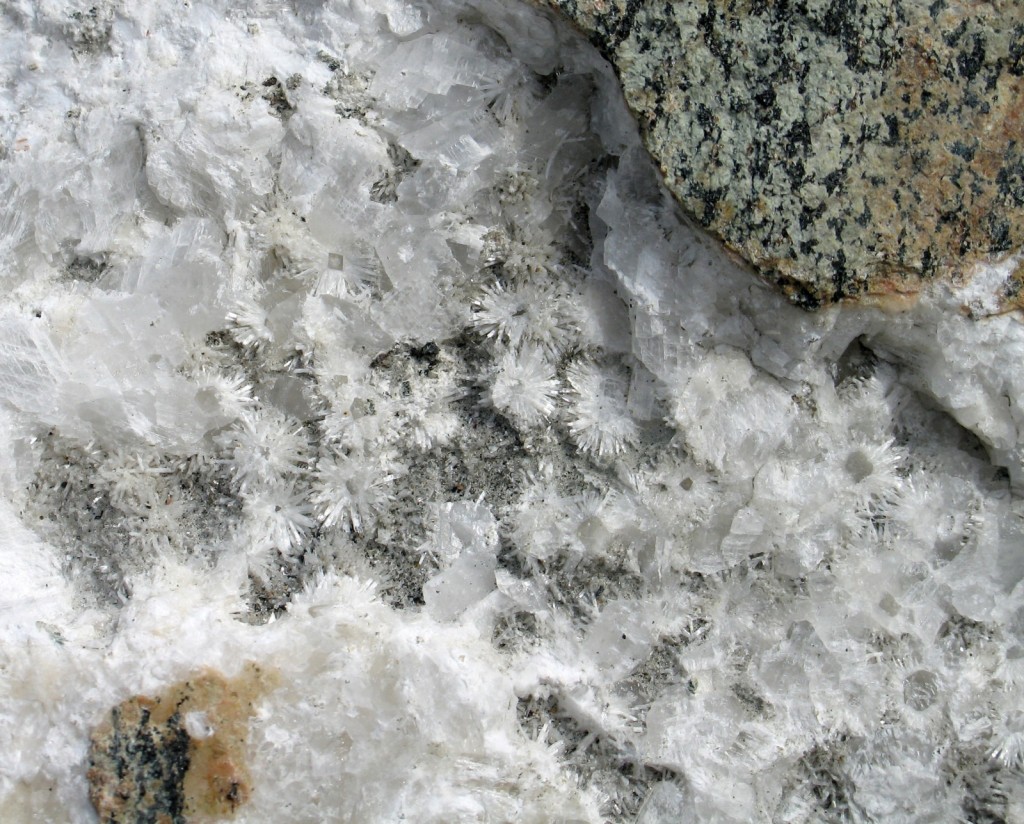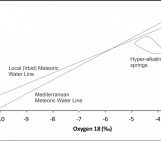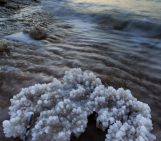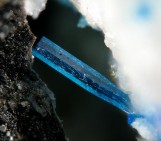This week’s photo is another mineralogy themed one. This photo shows beautiful, yet also flattened crystals of the mineral natrolite that has grown in an acicular habit from a central point making them look sort of like little snowflakes. Natrolite is a relatively common hydrated sodium, aluminum silicate mineral (Na2Al2Si3O10 · 2H2O) that often forms within the void spaces of igneous rocks such as amygdular basalt. In this instance it looks like natrolite has formed along a fracture plane due to its flattened appearance suggesting the only room it had to grow was outward as opposed to up, which is why it has made these “snowflake” shapes.

Crystals of natrolite along a vein in urtite (foidolite) by Dmitry Zhirov




Lockwood
There’s also some calcite in there, and the square outlines *may* be apophyllite, but I can’t see enough detail to be confident.
Matt Herod
Good eye Lockwood!!